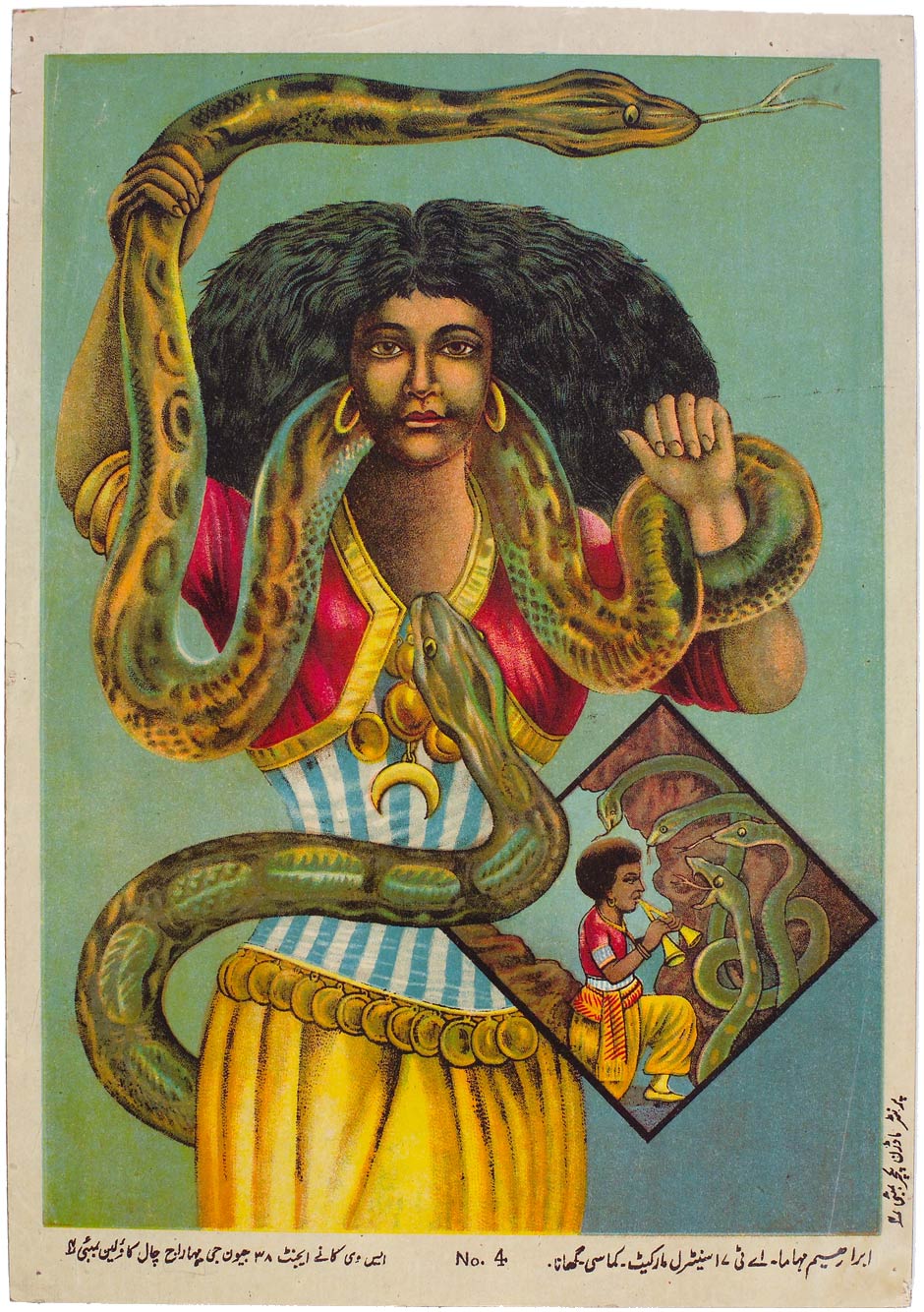
Chromolithograph from an original painted by Arnold Schleisinger in Hamburg between 1880 and 1887.
On the request of a dealer from Kumasi (Ghana), this copy was printed from the first edition, by the Shree Ram Calendar Company, in Bombay, in 1955-1956.
Papier
Acquired from the ethnologist Hans Himmelheber in 1967
MEG Inv. ETHAF 033696
The image above is subject to copyright.
Copyrights for Photographic Reproduction
Les feuillets numérisés des registres d'inventaires historiques sont soumise à un copyright.
Droits de reproduction photographique
 Copie dactylographiée en 13 volumes de l'Inventaire original MEG manuscrit
Copie dactylographiée en 13 volumes de l'Inventaire original MEG manuscrit
Registres_inventaire_dactylographie/3274.pdf
 Registre d'inventaire original - non indexé
Registre d'inventaire original - non indexé
Registres_inventaire_original/Registre_16_032998_034277.pdf
Deprived of their costumes, adornments, torchlight and rhythmic movements, the "masks" are no longer what they were when they danced in their original context; in the museum they become mere fragments. But they escape from their dry ethnic classification to conjure up some of the great cults of sub-Saharan Africa which have existed alongside Islam since the eleventh century.
Whether they are related to entertainment – like the portrait masks – initiation or anti-witchcraft rituals, masks always have a social function. When they come out in public, there is great excitement because they act out the social order, under the direction of the masters of the ritual, to remind everyone of their role in the hierarchy. All the villagers go to see the performance or behave in the manner that befits their status: hide, run away, help and serve the masks, answer them back, ask for their blessing.
© 2021 Musée d'ethnographie, Genève